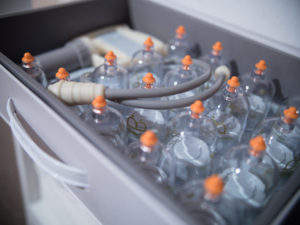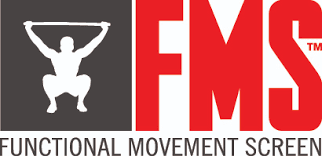Cupping therapy has been around for thousands of years. Known just as “cupping,” this type of alternative medicine rose to popularity in the last few years when Olympic-level swimmer Michael Phelps performed in 2016 with small, circular, bruise-like marks on his skin. Although now trendy, cupping treatments are documented in one of the world’s oldest medical textbooks dating 1550 B.C. as a form of treatment for pneumonia and bronchitis!
Although initially used as a treatment for lung conditions, cupping is used widely today for musculoskeletal injuries, inflammation, blood flow, relaxation, massage, and pain relief.
But what is cupping therapy, and how is it effective?

Cupping therapy in our office
During a cupping session, a trained practitioner places small cups made of glass or silicone plastic on the skin to create suction. Suction is created between the bell of the cup and the surface of the skin in one of two ways: either using a controlled flame to reduce oxygen inside the cup and create a vacuum or using a manual handheld pump to “suck” the oxygen out of the cup. The cups stick to the skin using traction, and they can remain stationary or slide around on the skin to create a massage-like effect.
As the cups rest or slide on the skin, the traction-like suction may create a reddish mark. These circular red-and-purple shapes aren’t like typical bruises seen with injuries, however. The tensile strength of the cup’s suction on the skin produces something known as transient therapeutic petechiae. Petechiae is the medical term for clusters of tiny red dots in the muscle or skin (cutaneous) part of the body receiving treatment. These reddened or purplish areas on the skin are where superficial blood left the capillaries and leaked into the skin tissue layers above. As a result, the skin almost looks like the person was wrestling an octopus!
This mild response is caused by localized suction from the applied cup and is usually not a health concern, although you may wish to cover the area with clothing if you feel uncomfortable.
Cupping helps loosen the fascia (connective tissue) around sore, tight muscles and stimulate blood flow to the surface. This helps facilitate the healing process for damaged or sore soft tissues, ranging from tight muscles to mild to moderate injuries like sprains and strains.
How long do cupping treatment take?
Cupping doesn’t take very long to perform. Each cup sits on the skin for only a few minutes at a time before being removed. A person may have a single cup, or several cups, applied to their body. A person may have one session of cupping therapy, or several sessions spaced out over the course of several weeks.
Where can cups be placed on my body?
Almost anywhere there’s skin! A provider can place cups along your back, stomach, arms, legs, hamstrings, and other parts of the body. Cupping is not usually performed on the face or scalp due to cosmetic concerns. Cups are also not placed directly over bony ridges.
Are there any side effects?
Cupping is relatively safe and low risk, but like any therapy, there are potential side effects and concerns. These are:
- Red cosmetic marks that fade in 1-2 weeks
- Fatigue
- Muscle tension or soreness
- Skin infections, itching, or scarring
- Burns from heated cups
If you experience any of these symptoms from cupping, or have experienced them from cupping sessions in the past, talk to our doctor of chiropractic to determine if cupping therapy is the right form of treatment for your condition.
Who shouldn’t get cupping?
Although cupping is generally considered safe, you should talk to your doctor before attempting this therapy if you are pregnant or have:
- A history of strokes or deep vein thrombosis
- Seizures or epilepsy
- Blood clotting problems
- Hemophilia or other bleeding disorders
Is cupping therapy effective?
For a therapy as ancient as cupping, there aren’t many high-quality research studies about the therapeutic effects yet. Cupping may provide a placebo effect by itself. A 2012 report in PLoS One concluded that cupping may be effective when paired with other treatments like medication or acupuncture. While more research is needed, many patients report improvements with range of motion, pain, stress, and muscle tightness after receiving cupping therapy.
If soft tissue dysfunction is the cause of your muscle or joint condition, then cupping therapy may be the right technique for you. Cupping is just one form of treatment we successfully use to treat our patients!


